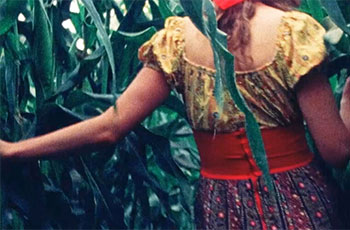
Martin Scorsese created the World Cinema Project (WCP) in 2007 recognizing the urgent need to preserve, restore, and provide access to films from around the world. To date, 70 films from Africa, Asia, Eastern Europe, Central America, South America, and the Middle East have been restored, preserved, and exhibited for global audiences. As part of the WCP, the African Film Heritage Project (AFHP) was launched in 2017 in partnership with the Pan African Federation of Filmmakers (FEPACI) and UNESCO, in collaboration with Cineteca di Bologna, to preserve the legacy of African cinema. The WCP also supports Restoration Film Schools, intensive, results-oriented workshops allowing students and professionals to learn the art and science of film restoration and preservation. Titles are available for exhibition rental by clicking "Book This Film."

MORTU NEGA
Director: Flora Gomes
WRITTEN BY: Manuel Rambout Barcelos, Flora Gomes, David Lang
EDITING: Christiane Lack
DIRECTOR OF PHOTOGRAPHY: Dominique Gentil
PRODUCER: Maria Cecilia Fonseca
SOUND: José da Silva Carvalho
STARRING: Bia Gomes, Tunu Eugenio Almada, Mamadu Uri Balde, Pedro da Silva, Flora Gomes, Homna Nalete, M'Male Nhasse
COUNTRY OF PRODUCTION: Guinea-Bissau
LANGUAGE: Kriolu, Portuguese
COLOR INFO: Color
RUNNING TIME: 96 minutes
PRODUCER: Maria Cecilia Fonseca
Restored by The Film Foundation’s World Cinema Project and Cineteca di Bologna at L’Immagine Ritrovata laboratory in association with Flora Gomes. Funding provided by the Hobson/Lucas Family Foundation.
This restoration is part of the African Film Heritage Project, an initiative created by The Film Foundation’s World Cinema Project, the Pan African Federation of Filmmakers and UNESCO – in collaboration with Cineteca di Bologna – to help locate, restore, and disseminate African cinema.
NOTES ON THE RESTORATION:
MORTU NEGA was restored in 4K from the original super 16mm camera negative and 35mm magnetic sound, stored at LTC Laboratoires. Color grading was supervised by Dominique Gentil and Flora Gomes. Special thanks to Arsenal – Institut für Film und Videokunst.
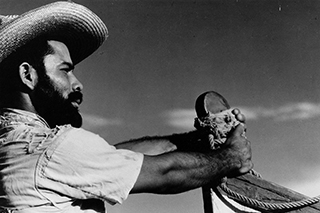
REDES
Director: Fred Zinnemann, Emilio Gómez Muriel
WRITTEN BY: Agustín Velázquez Chávez, Paul Strand
EDITING: Emilio Gómez Muriel, Gunther von Fritsch
DIRECTOR OF PHOTOGRAPHY: Paul Strand
ADAPTED BY: Emilio Gómez Muriel, Fred Zinnemann and Henwar Rodakiewicz
MUSICAL DIRECTOR: Silvestre Revueltas
SOUND: Roberto, Joselito Rodriguez
FROM: Cinemateca de la UNAM, Mexico
STARRING: Silvio Hernández (Miro), David Valle González (Monopolist), Rafael Hinojosa (Politician), Antonio Lara (El Zurdo), Miguel Figueroa and native fishermen
COUNTRY OF PRODUCTION: Mexico
LANGUAGE: Spanish with French and English subtitles
COLOR INFO: Black and White
RUNNING TIME: 61 minutes
PRODUCTION COMPANY: Secretaría de Educación Pública
Restored in 2009 by Cineteca di Bologna/L'Immagine Ritrovata laboratory, in association with The Film Foundation’s World Cinema Project and Filmoteca de la UNAM. Restoration funded by Armani, Cartier, Qatar Airways and Qatar Museum Authority.
The film – the first (and last) of its kind – was expected to play a small part in the Government’s plan to educate millions of illiterate citizens throughout the enormous country and bring them out of their isolation. […] The picture was to be made for the Federal Department of Fine Arts, headed by composer Carlos Chávez. The producer would be Paul Strand. […] We had recruited practically all ‘actors’ from among the local fishermen, who needed to do no more than be themselves. They were splendid and loyal friends, and working with them was a joy. In addition to acting, they carried all the equipment, rowed the boats and did a multitude of other jobs, earning more money than ever before – forty-five cents per day, per man – and enjoying themselves hugely. […] I’m told that some years later the Nazis found the negative in Paris and burned it. A few prints still exist. –Fred Zinnemann
NOTES ON THE RESTORATION:
The restoration of Redes used the best surviving materials, namely a 35mm safety duplicate negative and a positive print preserved at the Filmoteca de la UNAM in Mexico. The digital restoration produced a new 35mm internegative.
Image: © Courtesy of Filmoteca de la UNAM
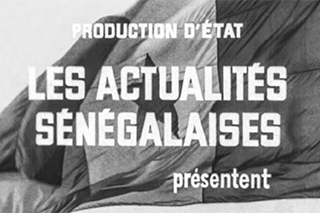
VOYAGE AUX ANTILLES DU PRÉSIDENT SENGHOR
Director: Georges Caristan
COUNTRY OF PRODUCTION: Senegal
LANGUAGE: French with English subtitles
COLOR INFO: Black and White
RUNNING TIME: 17 minutes
Restored by The Film Foundation’s World Cinema Project and Cineteca di Bologna at L’Immagine Ritrovata laboratory, in collaboration with the Ministère de la Culture et du Patrimoine Historique de Sénégal – Direction du Cinéma. Restoration funded by the Hobson/Lucas Family Foundation.
This restoration is part of the African Film Heritage Project, an initiative created by The Film Foundation's World Cinema Project, the Pan African Federation of Filmmakers and UNESCO―in collaboration with Cineteca di Bologna―to help locate, restore, and disseminate African cinema.
NOTES ON THE RESTORATION:
The 4K restoration was completed using a 16mm print preserved by the Direction du Cinéma in Senegal. With special thanks to Tiziana Manfredi and Marco Lena.

GHATASHRADDHA
Director: Girish Kasaravalli
WRITTEN BY: Girish Kasaravalli, K.V. Subanna
EDITING: Umesh Kulkarni
DIRECTOR OF PHOTOGRAPHY: S. Ramachandra
STARRING: Narayan Bhatt, Ramaswamy Iyengar, Janganath, Ajith Kumar, Shanta Kumari, Meena Kuttappa, Ramakrishna, Suresh
COUNTRY OF PRODUCTION: India
LANGUAGE: Kannada
COLOR INFO: B&W
RUNNING TIME: 115 minutes
Restored by The Film Foundation’s World Cinema Project and Film Heritage Foundation at L’Immagine Ritrovata laboratory in association with Girish Kasaravalli. Funding provided by the Hobson/Lucas Family Foundation.
NOTES ON THE RESTORATION:
Restored using the 35mm original camera negative preserved at the NFDC-National Film Archive of India and a 35mm print preserved at the Library of Congress.
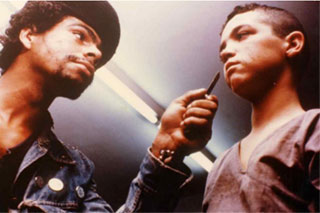
PIXOTE
PIXOTE, A LEI DO MAIS FRACO
Director: Héctor Babenco
WRITTEN BY: Héctor Babenco, Jorge Durán
EDITING: Luiz Elias
DIRECTOR OF PHOTOGRAPHY: Rodolfo Sanchez
PRODUCER: Sylvia B. Naves, Paulo Francini, José Pinto
ART DIRECTOR: Clóvis Bueno
STARRING: Fernando Ramos da Silva (Pixote), Jorge Julião (Lilica), Gilberto Moura (Dito), Edilson Lino (Chico), Zenildo Oliveira Santos (Fumaça), Claudio Bernardo (Garatao), Israel Feres David (Roberto Pie de Plata), Jose Nilson Martin Dos Santos (Diego), Marília Pêra (Sueli)
COUNTRY OF PRODUCTION: Brazil
LANGUAGE: Portuguese with English subtitles
COLOR INFO: Color
RUNNING TIME: 128 Minutes
PRODUCTION COMPANY: Embrafilme, HB Filmes
PRODUCER: Sylvia B. Naves, Paulo Francini, José Pinto
Restored by The Film Foundation’s World Cinema Project and Cineteca di Bologna at L'Immagine Ritrovata in association with HB Filmes, Cinemateca Brasileira, and JLS Facilitações Sonoras. Restoration funded by the Hobson/Lucas Family Foundation.
NOTES ON THE RESTORATION:
Restored in 4K from the 35mm original camera negative and a first generation 35mm dupe negative preserved at the Cinemateca Brasileira. In order to minimize the overall presence of mold, particularly invasive in reels 3, 5 and 6, the camera negative was wet-gate scanned at 4K resolution and digital restoration required considerable efforts. Missing frames in three different shots of reel 3 were replaced using the internegative.
The recently rediscovered original magnetic soundtrack, also affected by mold, with the oxide peeling off the base, was carefully repaired by Beto Ferraz then digitized and restored by José Luiz Sasso (ABC), sound engineer for Hector Babenco in 1981. Final color grading was supervised by cinematographer Rodolfo Sánchez using a first generation vintage 35mm print as reference.
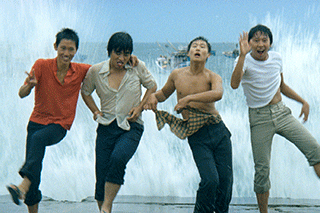
BOYS FROM FENGKUEI, THE
FENG GUI LAI DE REN
Director: Hou Hsiao-hsien
WRITTEN BY: T'ien-wen Chu
DIRECTOR OF PHOTOGRAPHY: Kun Hao Chen
SOUND: Duu-Chih Tu
STARRING: Chun-fang Chang, Shih Chang, Doze Niu, Chao P'eng-chue, Chung-Hua Tou, Li-Yin Yang
COUNTRY OF PRODUCTION: Taiwan
LANGUAGE: Mandarin with English subtitles
COLOR INFO: Color
RUNNING TIME: 101 minutes
Restored by the Cinémathèque Royale de Belgique in collaboration with Hou Hsiao-hsien and The Film Foundation’s World Cinema Project.
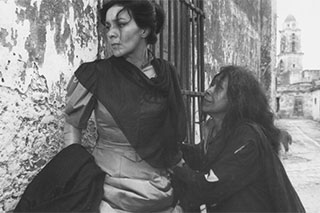
LUCIA
Director: Humberto Solás
WRITTEN BY: Humberto Solás, Julio Garcia Espinosa, Nelson Rodríguez
EDITING: Nelson Rodríguez
DIRECTOR OF PHOTOGRAPHY: Jorge Herrera
PRODUCER: Raúl Canosa, Camilo Vives
PRODUCTION DESIGN: Pedro Garcia Espinosa, Roberto Miqueli
STARRING: 1895: Raquel Revuelta (Lucía); Eduardo Moure (Rafael); Idalia Anreus (Fernandina); 1932: Eslinda Nuñez (Lucía); Ramón Brito (Aldo); Flora Lautén (Flora); 196..: Adela Legrá (Lucía); Adolfo Llauradó (Tomás); Teté Vergara (Angelina)
COUNTRY OF PRODUCTION: Cuba
LANGUAGE: Spanish
COLOR INFO: Black and White
RUNNING TIME: 160 minutes
PRODUCTION COMPANY: Instituto Cubano del Arte e Industria Cinematográficos (ICAIC)
PRODUCER: Raúl Canosa, Camilo Vives
Restored by Cineteca di Bologna at L’Immagine Ritrovata laboratory in association with Instituto Cubano del Arte e Industria Cinematográficos (ICAIC). Restoration funded by Turner Classic Movies and The Film Foundation’s World Cinema Project.
One of the abilities of cinema is to portray what a country is going through… it is about putting the country’s face on the screen, but it’s also about enlarging one’s vision of that specific place.
-- Walter Salles
ICAIC was born out of the victory of the Revolution. Those of us who were about to attempt to found a national film industry from scratch faced a set of problems that we had to resolve immediately. Our problem was a basic cultural dichotomy, as in Lenin’s thesis on national cultures. We had an elitist cultural tradition that represented the interests of the dominant class, and a more clandestine culture that had already received wide exposure; however, at some point, all artistic expression started to be converted into products of a consumer-oriented culture.
Because the elitist and the popular were so intimately tied, because petit bourgeois consciousness and influences from Europe and North America were so dominant, our general cultural panorama at the time of the Revolution was in fact a pretty desolate one. This was during the sixties, when the most important film movement was the French New Wave. Films like Alain Resnais’ Hiroshima mon amour (1959) or Michelangelo Antonioni’s L’Avventura (1960) marked most of the subsequent decade. These influences alienated us from our indigenous cultural forms and from a more serious search for a kind of cultural expression consistent with national life and with the explosive dynamism of the Revolution. Yet this was a path we clearly had to travel. Anyone who picks up the tools of artistic activity for the first time is going to be vulnerable to outside influences.
With Lucía, I wanted to view our history in phases, to show how apparent frustrations and setbacks –such as the decade of the ’30s–led us to a higher stage of national life. Whenever you make a historical film, whether it’s set two decades or two centuries ago, you are referring to the present.
Lucía is not a film about women, it’s a film about society. But within society, I chose the most vulnerable character, the one who is more transcendentally affected at any given moment by contradictions and change.
-- Humberto Solás
NOTES ON THE RESTORATION:
The restoration of Lucía was made possible through the use of the original camera and sound negative and a third generation dupe negative provided by and preserved at the ICAIC.
The state of conservation of the negative was critical, due to advanced vinegar syndrome causing portions of the film stock to colliquate (melt) or stick together; the negative also appeared heavily warped and buckled, causing the image to lose focus throughout the film. Despite undergoing several weeks of drying and softening treatments, large portions of 8 (out of 18) reels could not be used. These sections were replaced with a second generation duplicate preserved by the Bundesarchiv-Filmarchiv since
the film had been distributed in East Germany in the late 1960s.
All the elements were wet-scanned at a 4K resolution to eliminate or reduce heavy scratches and halos. Additional documentation was used to confirm that the film had been shot on two different film stocks–Orwo and Ilford–and graded according to the time-period depicted in the film. A previously unscreened vintage print preserved at the BFI National Archive was used as a reference.
The original soundtrack was in fairly good condition, with the exception of uneven and inconsistent background noise detected in
the mix which required careful dynamic noise reduction.
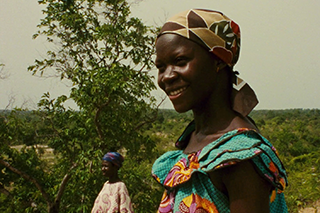
YAM DAABO
Director: Idrissa Ouédraogo
WRITTEN BY: Idrissa Ouédraogo
EDITING: Arnaud Blin
DIRECTOR OF PHOTOGRAPHY: Jean Monsigny
STARRING: Moussa Blogo, Aoua Guiraud, Assita Ouedrago, Fatima Ouedrago, Omar Ouedrago, Salif Ouedrago , Rasmané Ouedraogo
COUNTRY OF PRODUCTION: Burkina Faso
COLOR INFO: Color
RUNNING TIME: 80 minutes
Restored by The Film Foundation’s World Cinema Project and Cineteca di Bologna at L’Immagine Ritrovata laboratory, in collaboration with Les Films de la Plaine and the family of Idrissa Ouédraogo.
Restoration funded by the Hobson/Lucas Family Foundation.
This restoration is part of the African Film Heritage Project, an initiative created by The Film Foundation's World Cinema Project, the Pan African Federation of Filmmakers and UNESCO―in collaboration with Cineteca di Bologna―to help locate, restore, and disseminate African cinema.
NOTES ON THE RESTORATION:
YAM DAABO was restored in 4K using the 16mm original camera negative and magnetic sound. Color grading was finalized with the help of director of photography Sekou Ouedraogo.
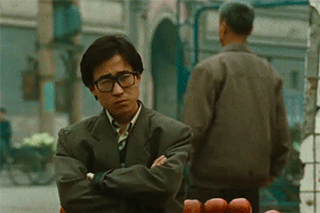
PICKPOCKET
XIAO WU
Director: Jia Zhang-ke
WRITTEN BY: Jia Zhang-ke
EDITING: Lin Xiao Ling
DIRECTOR OF PHOTOGRAPHY: Yu Lik Wai
PRODUCER: Li Kit Ming, Jia Zhang-ke
ASSISTANT DIRECTOR: Gu Zheng
ART DIRECTOR: Liang Jing Dong
STARRING: Wang Hong wei, Hao Hong Jian, Zuo Bai Tao
COUNTRY OF PRODUCTION: China
LANGUAGE: Mandarin
COLOR INFO: Color
RUNNING TIME: 108 minutes
PRODUCER: Li Kit Ming, Jia Zhang-ke
Restored by The Film Foundation's World Cinema Project and Cineteca di Bologna at L'Immagine Ritrovata laboratory in collaboration with Jia Zhang-ke and in association with MK2.
Restoration funding provided by the Hobson/Lucas Family Foundation.
NOTES ON THE RESTORATION:
The 4K restoration of XIAO WU was made from the original 16mm camera and sound negatives. The restoration process and color grading was supervised by director Jia Zhang-ke.
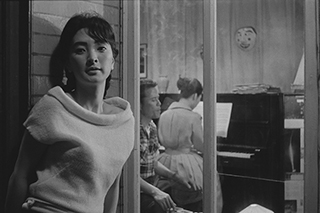
HOUSEMAID, THE
HANYO
Director: Kim Ki-Young
WRITTEN BY: Kim Ki-Young
EDITING: Kim Ki-Young
DIRECTOR OF PHOTOGRAPHY: Kim Deok-jin
PRODUCER: Kim Young-chul
MUSICAL DIRECTOR: Han Sang-Ki
ART DIRECTOR: Park Seok-in
STARRING: Lee Eunshim (Housemaid), Kim Jin-kyu (Dong-sik), Ju Jeung-nyeo (Dong-sik’s wife), Um Aeng-ran (Cho Kyung-hee)
COUNTRY OF PRODUCTION: South Korea
LANGUAGE: Korean with English subtitles
COLOR INFO: Black and White
RUNNING TIME: 110 minutes
PRODUCTION COMPANY: Korean Munye Films Co., Ltd.
PRODUCER: Kim Young-chul
Restored in 2008 by the Korean Film Archive (KOFA), in association with The Film Foundation's World Cinema Project and HFR-Digital Film laboratory. Additional restoration funded by Armani, Cartier, Qatar Airways and Qatar Museum Authority.
Kim Ki-young’s Hanyo, or The Housemaid, is one of the true classics of South Korean cinema, and when I finally had the opportunity to see the picture, I was startled. That this intensely, even passionately claustrophobic film is known only to the most devoted film lovers in the west is one of the great accidents of film history. I’m proud that the World Cinema Foundation is participating in the restoration and preservation of this remarkable picture. I am eager for more people to get to know and love The Housemaid.
–Martin Scorsese, February 2008
NOTES ON THE RESTORATION:
Hanyo has been restored digitally by the Korean Film Archive (KOFA) with the support of the World Cinema Foundation. The original negative of the film was found in 1982 with two missing reels, 5 and 8. In 1990 an original release print with hand-written English subtitles was found and used to complete the copy. This surviving print was highly damaged, and the English subtitles occupied almost half of the frame area. The long and complex restoration process has involved the use of a special subtitle-removal software and included flicker and grain reduction, scratch and dust removal, color grading.
Image: © Courtesy of Korean Film Archive
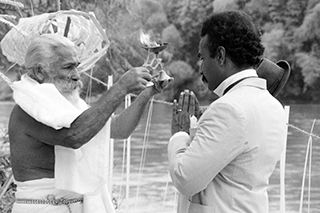
TREASURE, THE
NIDHANAYA
Director: Lester James Peries
WRITTEN BY: Tissa Abeysekera
EDITING: Lester James Peries, Edwin Leetin, Gladwyn Fernando
DIRECTOR OF PHOTOGRAPHY: M.S. Anandan
ADAPTED BY: G. B. Senanayake
MUSICAL DIRECTOR: Premasiri Khemadasa
ART DIRECTOR: J.A. Vincent Perera
STARRING: Gamini Fonseka, Malani Fonseka, Saman Bokalawala, Francis Perera, Mapa Gunaratne, Shanthi Lekha, Trilicia Gunawardene, Thilakasiri Fernando, J.B.L. Fernando, Thalatha Gunasekera, Kumarasinghe Appuhamy, K.L. Coranelis Appuhamy, Barry Whittington, Wijeratne Warakagoda
COUNTRY OF PRODUCTION: Sri Lanka
LANGUAGE: Sinhala
COLOR INFO: Black and White
RUNNING TIME: 108 minutes
PRODUCTION COMPANY: P.E.E. Anthonypillai for Ceylon Studios
Restored in 2013 by Cineteca di Bologna/L'Immagine Ritrovata laboratory, in association with The Film Foundation’s World Cinema Project, Lester James and Sumitra Peries, the National Film Archive of India, the National Film Corporation of Sri Lanka, Cinemas Ltd. Additional restoration elements provided by Degeto Films. Restoration funded by Doha Film Institute.
Nidhanaya is based on a dark tale by G.B. Senanayake and is considered a milestone film that people, even abroad, admire the most, albeit it is atypical of Lester James Peries’ customary family dramas. The story revolves around a psychotic killer yet is an underlying serious political study on the degradation of a class of society. In 1972 this film won the Silver Lion of St Mark at the 33th Venice International Film Festival and was selected as one of the outstanding films of the year, receiving a Diploma at the London Film Festival. It was also voted as the best film of the first 50 years of Sri Lankan cinema.
My most controversial film is Nidhanaya, which received a very positive reception at the Venice Film Festival. The most accurate critics highlighted that, despite its setting in 1911, this film holds a strong social and political value in denouncing the system. The character is trapped between two cultures: the Western/British one and his culture of origin—he is lost between two worlds. Unable to adapt to either one or the other, he absorbs the worse elements of the two cultures; the society changes and he goes insane.
- Lester James Peries
NOTES ON THE RESTORATION:
The restoration of Nidhanaya was made possible through the use of two key elements: a 35mm positive print struck from the original camera negative and held by Degeto Film, and a combined dupe negative preserved at the National Film Archive of India.
The prints were scanned at 4K resolution. After scanning, the image was stabilized and cleaned, and all wear marks were eliminated. Image grading recovered the richness of the original cinematography. The soundtrack was also digitally cleaned and background noise reduction was applied to reduce imperfections without losing the dynamic features of the original. The digital restoration produced a new 35mm internegative.
The World Cinema Foundation would like to thank the following individuals and organizations for their support: G R Padmaraj and Cinemas Ltd, National Film Corporation of Sri Lanka, National Film Archive of India, Shivendra Singh Dungarpur, Ravindra and Sam Randeniya, and Hubert Niogret.
Special thanks to Lester James Peries and Sumitra Peries for facilitating the restoration process.
Image: © Courtesy of National Film Corporation of Sri Lanka
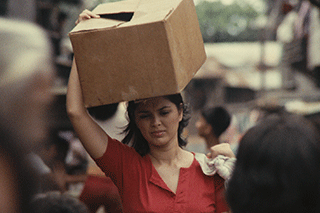
INSIANG
Director: Lino Brocka
WRITTEN BY: Mario O’Hara and Lamberto Antonio
EDITING: Augusto Salvado
DIRECTOR OF PHOTOGRAPHY: Conrado Baltazar
PRODUCER: Miguel De Leon Severino
MUSICAL DIRECTOR: Max Jocson
SOUND: Luis Reyes, Ramon Reyes
STARRING: Hilda Koronel, Mona Lisa, Ruel Vernal, Rez Cortez, Marlon Ramirez
COUNTRY OF PRODUCTION: Philippines
LANGUAGE: Tagalog with French and English subtitles
COLOR INFO: Color
RUNNING TIME: 124 minutes
PRODUCER: Miguel De Leon Severino
Restored by Cineteca di Bologna/ L’Immagine Ritrovata. Restoration funded by The Film Foundation’s World Cinema Project and the Film Development Council of the Philippines.
I’m so pleased that Insiang, the second of the great Lino Brocka’s films that we’ve managed to restore, has been selected for this year’s Cannes Classics: back in 1976, this extraordinary family melodrama was the first picture from the Philippines ever selected for Cannes. Brocka was like a force of nature in world cinema, and Insiang was among his greatest achievements. - Martin Scorsese, May 2015
Insiang is, first and foremost a character analysis: a young woman raised in a miserable neighborhood. I need this character to recreate the ‘violence’ stemming from urban overpopulation, to show the annihilation of a human being, the loss of human dignity caused by the physical and social environment and to stress the need for changes to these life conditions […] My characters always react through fighting. I have conceived Insiang like an immoral story: two women share the same man, the daughter avenges herself and, in the end, she reveals herself: she had conspired to kill her mother’s lover without having ever loved him, so that the murder was, in fact, unnecessary. Censorship refused this ending.” - Lino Brocka
In 1977 I was in Sydney for the film festival. Before going home, I zigzagged my way back through Jakarta, Singapore, Kuala Lumpur, Hong-Kong, Manila and Seoul, to discover a new filmmaker and an unknown film: Insiang by Lino Brocka. When Insiang was released on December 17, 1976, it did not do well, and led to the collapse of CineManila, the company founded by Brocka in 1974 after the extraordinary success of Tinimbang Ka Ngunit Kulang. The shooting of Insiang began on December 1 and lasted 11 days. Knowing these dates is important as they reveal the extreme urgency he felt, and his unique, authentic desire to make this film. Insiang also presents an unusual, brilliant mise-en-scène which shows the characters being torn apart by passion, by a sort of ardent energy. I am very pleased that, two years after Manila in the Claws of Light, Cannes Classics is showcasing another restoration of a Brocka film. I still remember the excitement, along rue Antibes, surrounding the screening of Insiang at the Quinzaine de Réalisateurs, in 1978. That was a very fulfilling and emotional experience, and I’m sure the same will be true today. - Pierre Rissient
NOTES ON THE RESTORATION:
The restoration of Insiang was made possible through the use of the original camera and sound negatives deposited at LTC laboratories by producer Ruby Tiong Tan.
The negative was wet-scanned at 4K resolution and digital restoration was very time-consuming. Some portions of the film, where the negative was intercut to the internegative were extremely damaged and two shots were replaced by use of a 35mm positive print preserved at the BFI National Archive.
Despite an overall acceptable state of preservation, the original optical sound negative presented critical recording issues. The sound restoration required considerable effort to try and solve or minimize the severe metallic hiss and distortions. Several acquisition methods were tested, leaving, however, very little room for improvement.
